Even when launched, the Nokia 7710 was something very new and very different. A Nokia device with no keyboard or keypad? A big touch-screen with stylus input? A form factor arguably even clumsier than that of the existing 9500 Communicator? In terms of software, Nokia came up with 'Series 90', a sideways development of the core OS underlying the Series 80 system used on the Nokia 9500. Yet barely months after availability, Nokia were pronouncing the death of Series 90, with the news that half-VGA landscape screens and stylus input would soon be available as part of Series 60. Now, in May 2006, we're starting to see some different screen sizes and resolutions in the S60 family, but there's still nothing to touch the form factor and feel of the 7710.
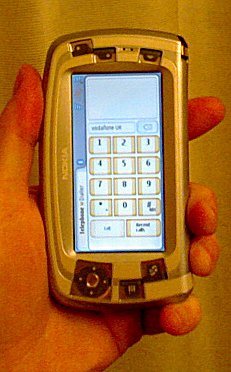 As is usual with Nokia smartphones, there has been a continual process of improvement through firmware upgrades (at local Nokia service centres, as usual). Starting out with a virtual prototype 7710, I had mine upgraded recently to the latest European firmware version, 4.10, widely reputed to be something of a 'must have'. I'm not going to attempt a long and boring list of changes between all the different firmware versions (1.x to 2.08 to 3.04 to 3.26 to 4.01 to 4.10), but in summary, by going from an early firmware to the latest, I noticed:
As is usual with Nokia smartphones, there has been a continual process of improvement through firmware upgrades (at local Nokia service centres, as usual). Starting out with a virtual prototype 7710, I had mine upgraded recently to the latest European firmware version, 4.10, widely reputed to be something of a 'must have'. I'm not going to attempt a long and boring list of changes between all the different firmware versions (1.x to 2.08 to 3.04 to 3.26 to 4.01 to 4.10), but in summary, by going from an early firmware to the latest, I noticed:
- Much better performance all round, many operations are at least twice as fast - or should that be half as slow, seeing as the 7710 still hasn't a lightning fast interface(!)
- Many, many usability improvements (e.g. being able to add SMS sender's name and number to Contacts, or being able to set the desktop wallpaper directly from Images) and better button support (though still not perfect)
- Faster and better camera, with full 1.3 megapixel resolution (early firmware limited capture to 1.0 megapixels)
- A portrait display mode in phone mode, which makes a surprising psychological difference
- Proper playlist support in Music player
- An 'active standby' screen (with full screen graphic, date and time and favourite four app shortcuts)
- A 'My view' system for handling a double keypress on the main Applications button (it makes most sense to assign this to the active standby screen mentioned above)
- Better application memory management (pressing and holding the 'C' key closes all apps except the current one, which makes more sense)
- Better profile support, including touch-screen shortcuts in the Desk toolbar and active standby screen
- Support for Bluetooth wireless keyboards and many Bluetoth headsets
- Temporary backlight of the screensaver by pressing the On/Off key
- SMS preview window without having to open a mesage fully
- Auto-deletion of old SMS messages if required
- Tap and hold context sensitive menus in the Web browser
That's quite a list! And believe me, I had to do lots of summarising to get the list that small. Here are a couple of relevant screen shots:
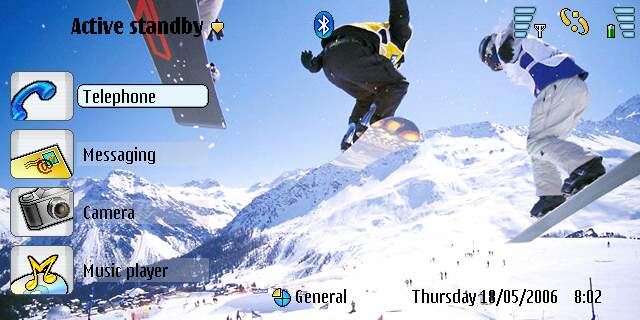
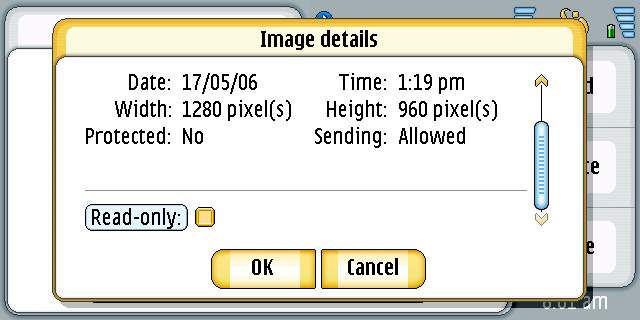
Part of the reason why Nokia put so much effort into improving the 7710, even after they'd decided that the device and the platform wasn't going anywhere, was because the 7710 was being used intensively around the world in half a dozen trials of DVB-H mobile TV (in the UK, in Oxford), coupled with Nokia's specialist SU-22 'Streamer' replacement rear cover. Because of their investment in DVB-H generally, Nokia would have wanted to make sure the tests went smoothly and would have put work into streamlining the user experience on the device.
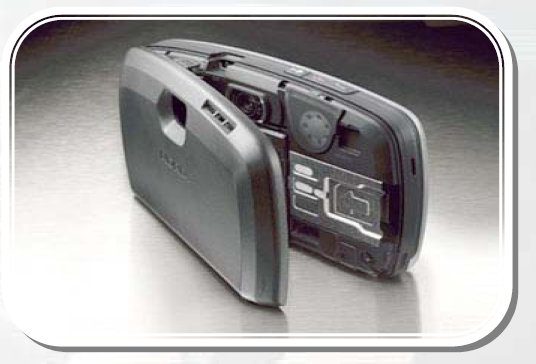
And, before anybody asks, no, the 7710 can't pick up digital TV signals anywhere, even if you could somehow source the player application and get hold of a SU-22; DVB-H has to be explicitly supported in your area by the phone networks. And I wouldn't be totally surprised if the final implementation of DVB-H was subtly incompatible with Nokia's trial hardware and software.
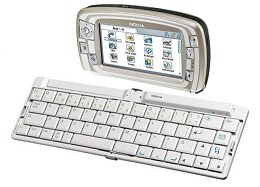 So where does that leave the 7710? It's an orphan, of that I'm sure. Apart from the prototype 7700, it's the only one of its kind. However, as you can see above, Nokia have done a LOT of work to improve performance and increase functionality, to the extent that the 7710 can still hold its head high in 2006 as a Symbian OS-powered communicator. The only real drawback is the lack of a future and the lack of third party software - while it's true that there are a couple of dozen decent titles for Series 90, there are many more (from the perspective of a S60 device owner) that are obviously missing in action.
So where does that leave the 7710? It's an orphan, of that I'm sure. Apart from the prototype 7700, it's the only one of its kind. However, as you can see above, Nokia have done a LOT of work to improve performance and increase functionality, to the extent that the 7710 can still hold its head high in 2006 as a Symbian OS-powered communicator. The only real drawback is the lack of a future and the lack of third party software - while it's true that there are a couple of dozen decent titles for Series 90, there are many more (from the perspective of a S60 device owner) that are obviously missing in action.
With its large, colour touch-screen and full Symbian Office suite, the 7710 (plus an optional Bluetooth keyboard) still appeals to many, not least ex-Psion palmtop owners who also found themselves orphaned, six years ago when Psion pulled the plug on their favourite device. From their perspective, there's no reason not to carry on using the 7710 for a couple of years yet, especially now Nokia has improved the device so much.
Perhaps with an eye on its use in the mobile TV trials, many 7710 owners are eyeing up the S60-based N92, due late summer 2006. Others will be eyeing up devices like the E61 and its successors, S60 communicators with much larger screens. It's a tough call, but then the Symbian OS world has (in the last few years, at least) always served up a healthy dose of one particular attribute - choice.
Steve Litchfield, May 2006, for AAS and 3-Lib
Relevant link: My original Nokia 7710 review, from ten months ago.
